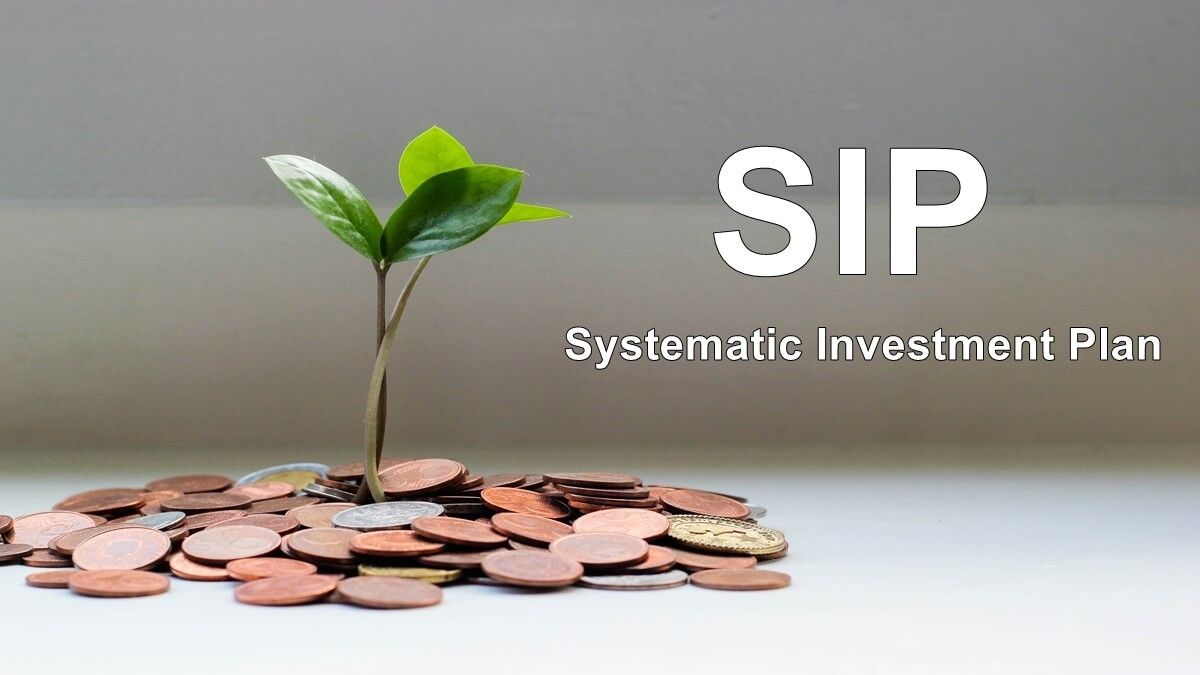How Do You Build Wealth with Long-Term Growth Investments?
In this opening section, we’ll set the foundation by defining what long-term growth means in the context of investing and why it’s so important for wealth building. We’ll explain that long-term growth isn’t about quick wins but steady, sustainable increases in portfolio value over years or decades. This helps readers understand the mindset needed for successful investing. The introduction also outlines what readers can expect, preparing them to dive into actionable strategies and insights.
Key Takeaway
- Consistency is crucial: Regular contributions and disciplined investing harness the power of compounding to grow your wealth steadily over time.
- Patience pays off: Long-term growth requires a commitment to stay invested through market ups and downs without reacting impulsively to short-term volatility.
- Diversification reduces risk: Spreading investments across asset classes, industries, and geographies protects your portfolio from severe losses and smooths returns.
- Understand your risk tolerance: Align your portfolio with your comfort level and financial goals to avoid panic selling during market turbulence.
- Continuous learning is essential: Staying informed about market trends, economic changes, and investment options helps you make better decisions and adapt strategies when needed.
- Behavioral discipline matters: Avoid emotional investing mistakes such as chasing hot stocks or selling during downturns; maintain a long-term mindset..
Understanding Long-Term Growth
Here, we explore the concept of long-term growth versus short-term gains. The section highlights why chasing fast profits can be risky and often counterproductive, whereas focusing on steady growth leverages the magic of compounding returns — where your earnings generate their own earnings over time. We’ll discuss the exponential benefits of staying invested and show readers how time in the market generally beats timing the market
Key Principles for Sustainable Long-Term Growth

This section breaks down core investing principles essential for lasting growth. We’ll dive into why patience and discipline are crucial, and how diversification spreads risk so your portfolio isn’t dependent on one asset class. It also covers the importance of consistent contributions and reinvesting dividends or interest to accelerate growth. The section helps investors understand how managing risk and volatility can keep them steady through market ups and downs
Building a Strong Investment Portfolio
This practical section provides guidance on constructing a balanced portfolio that suits long-term goals. We’ll cover how to allocate assets across stocks, bonds, real estate, and alternative investments, explaining the risk/reward profile of each. The role of mutual funds and ETFs will be discussed as accessible ways to diversify. We’ll also explain how fees and taxes can erode returns and what to watch for to optimize net gains.
The Role of Research and Continuous Learning
Investing isn’t static, and this section emphasizes the importance of staying informed. Readers learn how to keep up with market trends, analyze industries, and evaluate companies’ fundamentals. We explain why understanding market cycles helps with patience and avoiding panic selling. This section encourages an ongoing commitment to learning and adapting strategies.
Psychological Factors Affecting Long-Term Growth
This section explores the behavioral side of investing — the emotions that can sabotage growth like fear and greed. We’ll cover common mistakes such as panic selling during downturns or chasing hype stocks. Readers get tips on maintaining emotional discipline, developing a long-term mindset, and how to stick to their plan despite market turbulence.
The Impact of External Factors
Even the best plans are influenced by the broader economy and external forces. Here, readers learn about how inflation, interest rates, economic cycles, geopolitical events, and regulatory changes affect their investments. Understanding these forces helps investors adjust their strategies proactively rather than reactively.
Practical Tips for Investors
This actionable section gives clear steps for readers to implement. It includes setting SMART financial goals, creating personalized investment plans, using tools and technology, and knowing when to seek professional advice. Tax-efficient investing strategies like retirement accounts and capital gains management are also explained to help maximize after-tax returns.
Patience and Discipline
Markets fluctuate constantly. Staying invested and avoiding emotional reactions to market dips and spikes is crucial. Discipline means sticking to your investment plan and not chasing fads or trying to time the market.
Diversification
Spreading your investments across various asset classes (stocks, bonds, real estate, etc.) and sectors reduces risk. If one investment underperforms, others may compensate, balancing your overall returns.
Consistent Contributions and Reinvestment
Regularly adding to your investment portfolio and reinvesting dividends or interest compounds growth and accelerates wealth accumulation.
Risk Management

Understand your risk tolerance and adjust your portfolio accordingly. Younger investors might take more risk for higher returns, while those closer to retirement often prioritize capital preservation
Building a Strong Investment Portfolio
Creating a robust investment portfolio is essential for achieving sustainable long-term growth. A well-constructed portfolio balances risk and reward, aligns with your financial goals, and adapts to changing market conditions. Here’s how to build and maintain a portfolio designed for lasting success.
Define Your Investment Goals and Time Horizon
Before selecting investments, clearly define what you want to achieve and when you’ll need the money.
- Short-term goals (1–3 years): Prioritize capital preservation and liquidity.
- Medium-term goals (3–10 years): Balance growth and safety with moderate risk.
- Long-term goals (10+ years): Emphasize growth with a higher risk tolerance.
Your time horizon influences the types of assets suitable for your portfolio.
Asset Allocation
Determining the right mix of stocks, bonds, and alternative investments based on your goals, timeline, and risk tolerance is fundamental. For example, a younger investor might hold a higher percentage in stocks for growth potential, while an older investor might shift toward bonds for stability.
Investment Vehicles
- Stocks: Offer growth potential through capital appreciation and dividends.
- Bonds: Provide regular interest income and lower volatility.
- Mutual Funds and ETFs: Allow diversification and professional management.
- Real Estate: Can provide income and hedge against inflation.
- Alternative Investments: Include commodities, private equity, or cryptocurrencies, which add diversification but may carry higher risks.
Minimizing Fees and Taxes
Choose low-cost investment funds and use tax-advantaged accounts (like IRAs or 401(k)s) to improve net returns.
Continuous Learning and Adaptation
Stay informed about market trends, economic conditions, and new investment opportunities. Adapt your strategy as needed but avoid impulsive changes driven by short-term market noise.
Overcoming Psychological Barriers
Investing is as much psychological as financial. Avoid common pitfalls like panic selling during downturns or overconfidence during booms. Cultivate a long-term mindset and emotional resilience.
External Factors to Consider
Be aware of inflation, interest rates, geopolitical events, and regulatory changes, as these can affect investment returns and risk profiles. Preparing for these factors helps maintain your portfolio’s sustainability.
When aiming for sustainable long-term growth in your investments, it’s important to recognize that not all variables are within your control. External factors—broader economic, political, and social forces—can significantly impact market performance and investment returns. Understanding these forces helps you anticipate potential challenges, adjust your strategies proactively, and stay resilient through changing conditions.
Inflation
Inflation refers to the general rise in prices over time, which erodes the purchasing power of money. Even moderate inflation can reduce the real value of your investment returns if your portfolio’s growth doesn’t outpace inflation.
- Impact: If your investments grow slower than inflation, your wealth effectively shrinks in real terms.
- What to do: Include assets that historically outpace inflation, such as stocks, real estate, or Treasury Inflation-Protected Securities (TIPS). Diversify to protect against inflation risk.
Interest Rates

Interest rates, set by central banks like the Federal Reserve, influence borrowing costs, consumer spending, and corporate profits. Rising rates can increase bond yields but may lower bond prices and pressure stock valuations, especially for growth stocks dependent on cheap borrowing.
- Impact: Higher interest rates can slow economic growth and reduce investment returns; lower rates tend to boost markets.
- What to do: Monitor interest rate trends and adjust your portfolio allocation—consider shorter-duration bonds or dividend-paying stocks during rising rate environments.
Economic Cycles
Economies naturally move through cycles of expansion, peak, contraction, and recovery. These cycles affect corporate earnings, unemployment rates, and consumer confidence.
- Impact: During recessions, many investments may lose value; during expansions, markets tend to rise.
- What to do: Maintain a diversified portfolio that can weather downturns. Consider defensive sectors (like healthcare or consumer staples) during contractions and growth sectors during expansions.
Case Studies of Successful Long-Term Investors
Warren Buffett: The Oracle of Omaha
Warren Buffett, chairman and CEO of Berkshire Hathaway, is arguably the most famous long-term investor in history. His investing philosophy is grounded in value investing, patience, and deep fundamental analysis.
- Buy Quality Businesses: Buffett focuses on companies with durable competitive advantages, strong management, and consistent earnings.
- Long-Term Horizon: He famously said, “Our favorite holding period is forever.” Buffett rarely sells stocks once he invests.
- Disciplined Valuation: He invests only when prices offer a margin of safety, avoiding overvalued markets.
- Compound Growth: Buffett’s strategy benefits from compounding gains over decades, leading to exponential wealth growth.
- Focus on intrinsic business value, not short-term market fluctuations.
- Patience and discipline trump market timing.
- Reinvest earnings to compound wealth.
Jack Bogle: Pioneer of Index Fund Investing
Jack Bogle founded Vanguard Group and revolutionized investing by creating the first index mutual fund aimed at tracking market performance at minimal cost.
- Low-Cost Investing: Bogle emphasized minimizing fees and expenses to maximize net returns.
- Passive Investing: Instead of picking stocks, Bogle advocated investing in the entire market through index funds.
- Long-Term Focus: His strategy promotes staying invested through market cycles, avoiding attempts to time the market.
- Costs matter—lower fees lead to higher net growth over time.
- Broad market exposure reduces risk and captures average market returns.
- Consistency beats speculation.
Peter Lynch: The Growth Stock Guru
Peter Lynch managed the Fidelity Magellan Fund from 1977 to 1990, achieving average annual returns of 29%. His approach combined rigorous research with a focus on growth companie
- Invest in What You Know: Lynch famously encouraged investors to use their everyday experiences to find investment ideas.
- Growth at a Reasonable Price (GARP): He looked for companies with strong growth prospects trading at fair valuations.
- Diversification: Lynch held a broad portfolio, sometimes hundreds of stocks, to capture multiple growth opportunities.
- Personal knowledge can be a powerful investment tool.
- Balance growth potential with valuation discipline.
- Diversify to reduce risk and seize opportunities.
The Couch Potato Investor: Simple, Balanced Portfoli
Not a single individual, but a concept popularized by Canadian financial advisor Dan Bortolotti, the Couch Potato strategy involves a simple, balanced portfolio of index funds.
- Simplicity: Use just two or three low-cost index funds.
- Balance: Typically split between stocks and bonds to balance growth and risk.
- Passive Rebalancing: Adjust periodically to maintain target allocation.
- You don’t need complex strategies to succeed.
- Discipline and simplicity can deliver consistent long-term returns.
- Minimizing fees and taxes is critical.
Your Risk Tolerance

Risk tolerance is your ability and willingness to endure fluctuations in portfolio value.
- Conservative investors: Prefer stability, accept lower returns.
- Moderate investors: Willing to accept some volatility for better returns.
- Aggressive investors: Comfortable with high volatility for maximum growth.
Understanding your risk tolerance helps in deciding your asset allocation
Charlie Munger: The Power of Mental Models and Patience
Vice chairman of Berkshire Hathaway and longtime partner to Warren Buffett, Charlie Munger is known for his multidisciplinary approach to investing and life.
- Broad Knowledge Base: Munger emphasizes understanding multiple disciplines—psychology, economics, history—to inform decisions.
- Patience and Rationality: He advocates waiting for the right opportunities and avoiding impulsive decisions.
- Value Investing: Like Buffett, he seeks undervalued companies with durable moats.
- A wide-ranging knowledge base improves investment insight.
- Patience is crucial for long-term success.
- Avoid unnecessary complexity.
To inspire and provide concrete examples, this section profiles famous long-term investors such as Warren Buffett, highlighting their strategies and philosophies. It also includes anonymized real-world examples showing how steady investing has led to wealth growth over decades, reinforcing lessons from earlier sections.
Also Read: Is Income Investment the Right Strategy for You?
Conclusion
Achieving sustainable long-term growth in your investments is both an art and a science — a journey that demands patience, discipline, and a commitment to continuous learning. Unlike the allure of quick profits or speculative bets, sustainable growth relies on proven principles: diversification to spread risk, consistent contributions to fuel compounding, and a well-balanced portfolio aligned with your financial goals and risk tolerance.
While market volatility and external economic forces are inevitable, they need not derail your progress if you maintain a long-term perspective and emotional resilience. Understanding how to navigate these ups and downs, avoiding common behavioral pitfalls like panic selling or chasing fads, can make a significant difference in your investment outcomes.
Moreover, staying informed and periodically reviewing your strategy ensures you adapt intelligently to changing market conditions and personal circumstances. Leveraging professional advice and technology can further enhance your ability to make sound decisions.
Ultimately, sustainable long-term growth is achievable when you focus on what you can control — your saving habits, your investment choices, and your mindset — rather than attempting to predict or time the market. By adopting a patient, well-informed approach and committing to your plan, you give your investments the best chance to grow steadily and build lasting wealth over time.
FAQs
What is the best investment for long-term growth?
There isn’t a one-size-fits-all answer, as the best investment depends on your risk tolerance, time horizon, and goals. Generally, a diversified mix of stocks, bonds, and real assets tends to offer solid long-term growth potential. Stocks, particularly in high-quality companies, have historically outperformed other asset classes over extended periods.
How much should I invest regularly to see long-term growth?
The amount varies depending on your goals and time frame, but the key is consistency. Even small, regular contributions—monthly or quarterly—can grow substantially over time thanks to compounding. Setting a budget and automating investments helps maintain discipline and steadily build wealth.
What risks should I be aware of in long-term investing?
Long-term investing involves risks such as market volatility, economic downturns, inflation eroding purchasing power, and changes in interest rates or regulations. However, by diversifying your portfolio and staying invested through market cycles, you can reduce these risks and improve your chances of achieving steady growth.
How does diversification help with long-term growth?
Diversification spreads your investments across different asset classes, industries, and geographies. This reduces the impact of any one investment performing poorly and smooths overall portfolio returns, helping protect your capital while capturing growth opportunities.
Can I achieve long-term growth without investing in stocks?
While stocks are a common vehicle for long-term growth, it’s possible to grow wealth through other investments such as real estate, bonds, or alternative assets like private equity. However, stocks typically offer higher growth potential over long periods, so excluding them may limit returns
How do taxes affect my long-term investment returns?
Taxes can significantly reduce your net returns if not managed properly. Strategies such as using tax-advantaged accounts (e.g., IRAs or 401(k)s), holding investments long-term to benefit from lower capital gains rates, and tax-loss harvesting can help minimize tax impact and improve growth.
When should I rebalance my portfolio
Rebalancing is typically done annually or when your asset allocation shifts significantly due to market movements. Rebalancing ensures your portfolio stays aligned with your risk tolerance and goals by selling overperforming assets and buying underperforming ones, maintaining the intended diversification.


